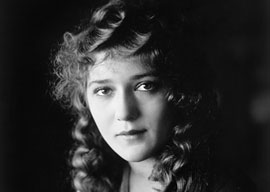
September 18, 2013

Mary Pickford
Wilfrid Sheed wrote of the mid-century New Yorker:
Thurber’s world cannot remotely be understood without understanding Prohibition, or the locker-room version of it: a plot brewed up by women and Protestant ministers while our soldiers were overseas, in order to end America’s men-only culture and bring the boys all the way home, not just as far as the nearest saloon.
Daniel Okrent, the author of the 2010 history of Prohibition, Last Call, told NPR, “Oddly, the suffrage movement and the Prohibition movement were almost one and the same….”
But it’s only odd from a contemporary perspective where Prohibition is bad and feminism is good, and thus they can’t have anything to do with each other, because that would be, you know, complicated.
In reality, WASP, Scandinavian, and Irish Catholic women had rational reasons to campaign against the saloons where their husbands wasted away their paychecks and health in binge drinking.
On the other hand, even if Prohibition had worked, Italian and Jewish immigrants hardly needed it. They had ancestors who had been drinking wine almost from the invention of agriculture in the Fertile Crescent. They had thereby evolved defenses, whether cultural or genetic, against the damage alcohol can do.
In the middle were Americans from Central Europe such as Mencken. The Germans generally favored beer drinking, which was less debilitating and more family-friendly than the Northwestern European hard-liquor habit. But German-American brewers had fallen out of favor during the anti-Teutonic war fever of 1917, undermining one bulwark against the Anti-Saloon League.
Interestingly, there was a positive correlation between an ethnic group’s long-term cultural leaning toward women’s liberation and its vulnerability to alcohol, with Northwestern Europeans being high on both. In North America, feminism arguably goes back over 1,000 years to Viking leader Leif Ericson’s alarming sister, FreydÃs EirÃksdóttir, scourge of the Skraelings. Northwestern Europeans, most notably the English, were moving away from arranged marriages by the Middle Ages.
So it was not surprising that WASPy America was favorable ground for feminism in the early 20th century, as shown by the Yankee domination of the women’s vote movement. In contrast, the newer immigrants of the era, such as Sicilians and Jews, came from more patriarchal cultures.
For instance, back during the D. W. Griffith era of filmmaking, women were widely employed as screenwriters, editors, directors, and even producers. Mary Pickford, “America’s Sweetheart,” produced her own movies from 1916 onward and became a mogul in 1919 when she, her fiancé Douglas Fairbanks Sr., Charlie Chaplin, and D. W. Griffith founded United Artists.
In the later 1920s, Gloria Swanson, backed by her boyfriend Joseph Kennedy, Sr.’s money, attempted to follow Pickford’s path into controlling her own career. But the now dominant studio system had little use for such presumption. Billy Wilder’s 1950 classic Sunset Boulevard, starring Swanson as washed-up silent star Norma Desmond, reflects studio Hollywood’s view of the powerful women of the industry’s early days as uppity broads who deserved to turn into crazy old bats. In the real world, though, Swanson, an extremely enterprising woman, had found numerous ways after leaving Hollywood for New York to make money (and would continue to do so up until her death in the 1980s).
The rise of the Ellis Island immigrant populations helped delay feminism’s triumph that had once seemed imminent in WASP-dominated America. But that’s the kind of paradox likely to be met with blank stares in 2013.